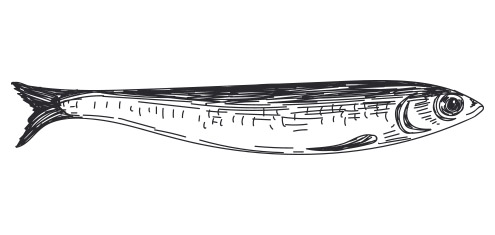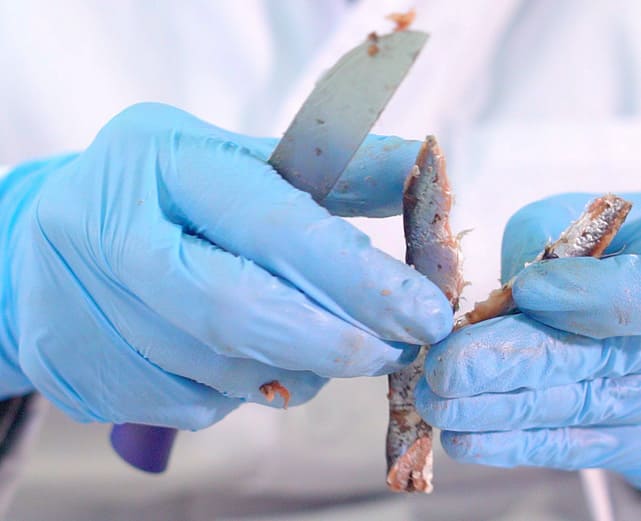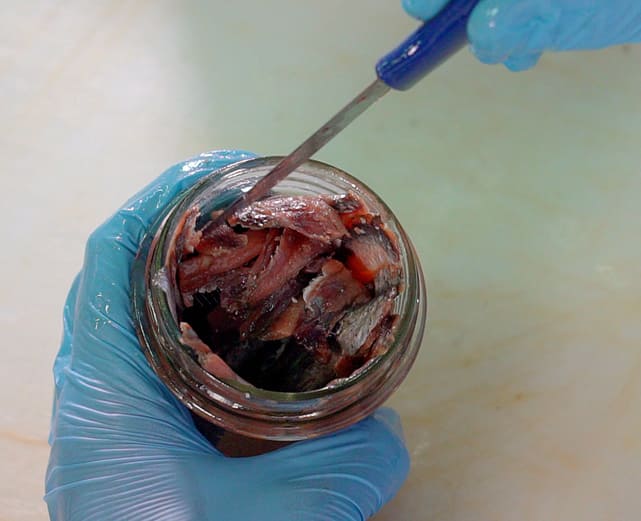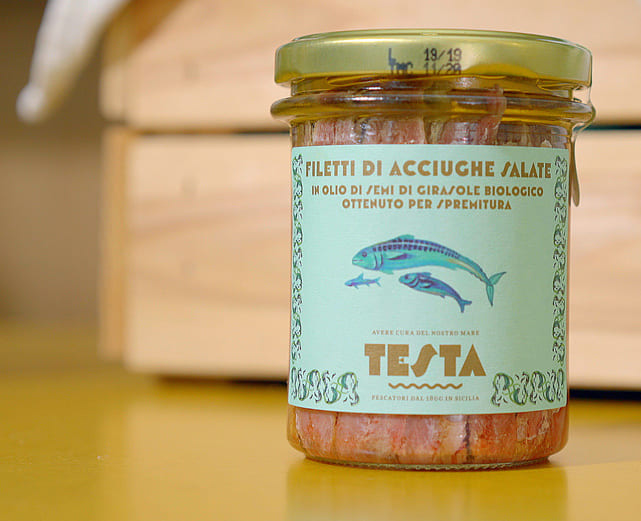Anchovies

If you think of the Sicilian sea, you think of anchovies: this is the name of the slender, elongated, silver-coloured fish with a blue back which, once salted, is commonly known as anchovies.
This is Futura Prima, the Testa family’s second motorboat, the vessel dedicated to fishing anchovies between the Strait of Sicily and the Ionian Sea, in the waters around Trapani and off Portopalo di Capo Passero. The fishing period for canned anchovies runs from the end of May to September and is only interrupted when Futura Prima is busy catching bluefin tuna with Atlante. It is in summer that anchovies can be fished most easily, as they make seasonal migrations that in winter push them towards deeper waters.
Anchovies first
Anchovies fishing
Anchovies are a gregarious species at every stage of their life and form very large shoals, often mixed with other species (e.g. sardines) but made up of similarly sized specimens. There are a number of laws that protect fishing for anchovies, including one that prohibits the use of too small a mesh size and one that identifies 9 cm as the minimum marketing size in the EU.
As with tuna, the time that precedes processing and determines the quality of anchovies is fundamental: they are fished with a special encircling net known as a “ciànciolo” on shallow waters, at a distance of between 10 and 20 miles from the coast, and are processed over a period of between 3 and 12 hours.
From “Alici” to “Acciughe”
The anchovies enter the Portopalo di Capopassero plant at a temperature of +4 degrees to be transferred to a holding cell.
First, the fish is “scapuzzato” with a pressure of the thumb and index finger, at the height of the gills, to remove the head and viscera. Within two hours of arrival, the anchovies are salted and placed in containers called ‘cugni’.
The curing time of salted anchovies varies according to climate and air quality, dry or humid. The cousins are transferred into 70-kilo bins, on which weights are placed: it is the pressure that draws out the blood and excess water.
A little treasure chest of goodness
After maturing, the anchovies are removed from the salt. To remove any residual liquid, they are wrapped in perforated cloths and passed through a centrifuge. Once the anchovies have been boned, it is time to fill the jar with cold-pressed organic seed oil: the skill lies in placing each fillet on top of the next, forming a continuous wall around the entire circumference of the jar.
Once the ritual is complete, the anchovies will be ready like a little treasure kept in a casket: a precious fish to bring to the table, for its taste, versatility and contribution of Omega-3, useful in the prevention of certain diseases.

grams of protein per 100g of anchovies
the centimetres of minimum size of anchovies allowed by the European Union for fishing
the metres of depth at which anchovies can be fished in the summer period










